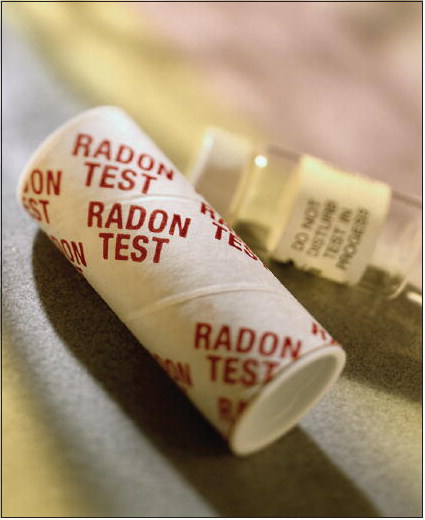January is . . . - National Radon Action Month


January is . . .
Radon is a naturally occurring radioactive gas. The United States Environmental Protection Agency notes that radon disperses rapidly outdoors, which makes it a generally innocuous gas. However, radon can become trapped indoors, and it's in those instances when the gas poses a potentially significant threat.
How does radon get inside?
The EPA notes that radon can enter buildings through cracks and other holes in the foundation. When that occurs, radon can become trapped indoors.
Why is radon a threat to human health?
When exposed to radon over time, people's risk for lung cancer increases. In fact, the EPA reports that radon exposure is the second leading cause of lung cancer in the United States. According to the Government of Canada, radon gas breaks down and forms radioactive elements, which can then be inhaled into the lungs. The breakdown of radon continues in the lungs, where radioactive particles release small bursts of energy. That energy is absorbed by lung tissue, contributing to damage in the cells of the lungs that can increase cancer risk. How do I know if I'm being exposed to radon inside?
Home radon test kits can be very effective at determining if radon is entering a home. These tests are inexpensive, but individuals who want a second opinion also can hire a certified radon measurement firm to test their properties. If levels are determined to be high, contact a radon remediation expert to address the issue. Can radon reenter my home?
Efforts at radon mitigation are generally very effective. However, mitigation systems can fail or stop working over time. So individuals concerned about recurrence can identify what caused the initial radon exposure, such as cracked foundations, and have those issues addressed. In addition, random testing for radon, even after mitigation efforts have been completed, can be a costeffective and simple safety net.
Does radon exposure produce symptoms?
The American Cancer Society reports that possible symptoms of radon exposure include shortness of breath, a new or worsening cough, pain or tightness in the chest, hoarseness, or trouble swallowing. The lack of these symptoms should not be mistaken for evidence that a home has no radon problem, which is why periodic testing is necessary and potentially lifesaving.
Though radon is naturally occurring, it can pose a significant threat when it enters a home. More information about radon is available at epa.gov.








